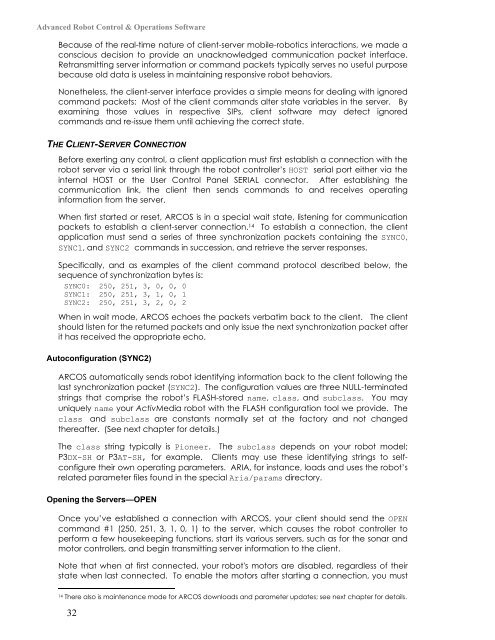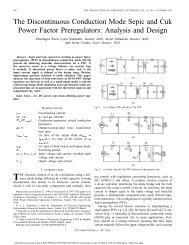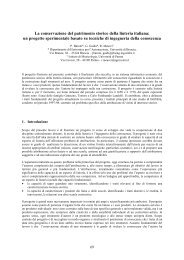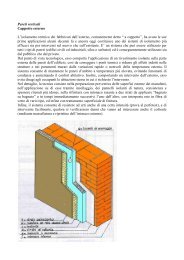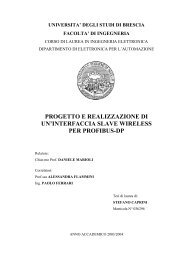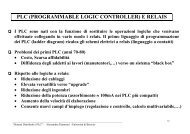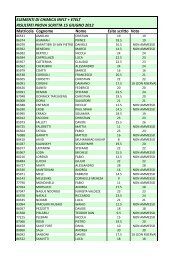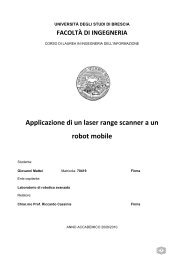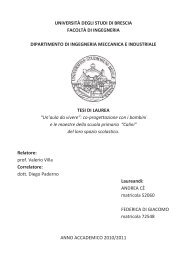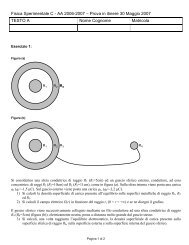Pioneer 3™ Operations Manual
Pioneer 3™ Operations Manual
Pioneer 3™ Operations Manual
Create successful ePaper yourself
Turn your PDF publications into a flip-book with our unique Google optimized e-Paper software.
Advanced Robot Control & <strong>Operations</strong> Software<br />
Because of the real-time nature of client-server mobile-robotics interactions, we made a<br />
conscious decision to provide an unacknowledged communication packet interface.<br />
Retransmitting server information or command packets typically serves no useful purpose<br />
because old data is useless in maintaining responsive robot behaviors.<br />
Nonetheless, the client-server interface provides a simple means for dealing with ignored<br />
command packets: Most of the client commands alter state variables in the server. By<br />
examining those values in respective SIPs, client software may detect ignored<br />
commands and re-issue them until achieving the correct state.<br />
THE CLIENT-SERVER CONNECTION<br />
Before exerting any control, a client application must first establish a connection with the<br />
robot server via a serial link through the robot controller’s HOST serial port either via the<br />
internal HOST or the User Control Panel SERIAL connector. After establishing the<br />
communication link, the client then sends commands to and receives operating<br />
information from the server.<br />
When first started or reset, ARCOS is in a special wait state, listening for communication<br />
packets to establish a client-server connection. 14 To establish a connection, the client<br />
application must send a series of three synchronization packets containing the SYNC0,<br />
SYNC1, and SYNC2 commands in succession, and retrieve the server responses.<br />
Specifically, and as examples of the client command protocol described below, the<br />
sequence of synchronization bytes is:<br />
SYNC0: 250, 251, 3, 0, 0, 0<br />
SYNC1: 250, 251, 3, 1, 0, 1<br />
SYNC2: 250, 251, 3, 2, 0, 2<br />
When in wait mode, ARCOS echoes the packets verbatim back to the client. The client<br />
should listen for the returned packets and only issue the next synchronization packet after<br />
it has received the appropriate echo.<br />
Autoconfiguration (SYNC2)<br />
ARCOS automatically sends robot identifying information back to the client following the<br />
last synchronization packet (SYNC2). The configuration values are three NULL-terminated<br />
strings that comprise the robot’s FLASH-stored name, class, and subclass. You may<br />
uniquely name your ActivMedia robot with the FLASH configuration tool we provide. The<br />
class and subclass are constants normally set at the factory and not changed<br />
thereafter. (See next chapter for details.)<br />
The class string typically is <strong>Pioneer</strong>. The subclass depends on your robot model;<br />
P3DX-SH or P3AT-SH, for example. Clients may use these identifying strings to selfconfigure<br />
their own operating parameters. ARIA, for instance, loads and uses the robot’s<br />
related parameter files found in the special Aria/params directory.<br />
Opening the Servers—OPEN<br />
Once you’ve established a connection with ARCOS, your client should send the OPEN<br />
command #1 (250, 251, 3, 1, 0, 1) to the server, which causes the robot controller to<br />
perform a few housekeeping functions, start its various servers, such as for the sonar and<br />
motor controllers, and begin transmitting server information to the client.<br />
Note that when at first connected, your robot's motors are disabled, regardless of their<br />
state when last connected. To enable the motors after starting a connection, you must<br />
14 There also is maintenance mode for ARCOS downloads and parameter updates; see next chapter for details.<br />
32


